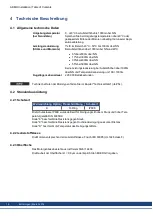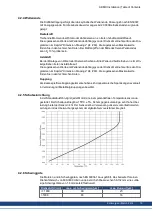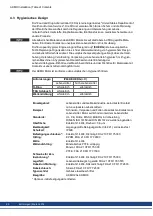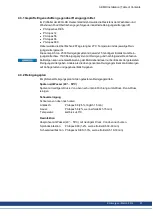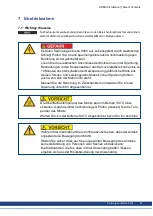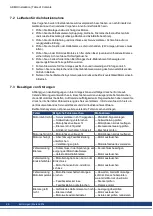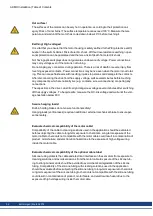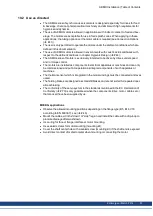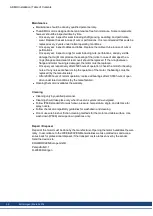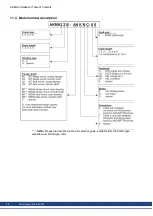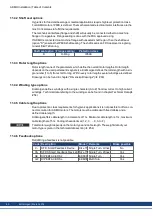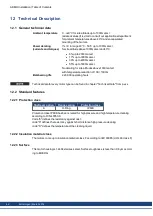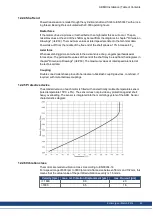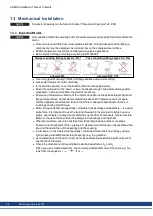
Hot surface!
The surfaces of the motors can be very hot in operation, according to their protection cat-
egory. Risk of minor burns! The surface temperature can exceed 100°C. Measure the tem-
perature, and wait until the motor has cooled down below 40°C before touching it.
Earthing! High voltages!
It is vital that you ensure that the motor housing is safely earthed to the PE (protective earth)
busbar in the switch cabinet. Risk of electric shock. Without low-resistance earthing no per-
sonal protection can be guaranteed and there is a risk of death from electric shock.
Not having optical displays does not guarantee an absence of voltage. Power connections
may carry voltage even if the motor is not turning.
Do not unplug any connectors during operation. There is a risk of death or severe injury from
touching exposed contacts. Power connections may be live even when the motor is not rotat-
ing. This can cause flashovers with resulting injuries to persons and damage to the contacts.
After disconnecting the drive from the supply voltage, wait several minutes before touching
any components which are normally live (e.g. contacts, screw connections) or opening any
connections.
The capacitors in the drive can still carry a dangerous voltage several minutes after switching
off the supply voltages. To be quite safe, measure the DC-link voltage and wait until the volt-
age has fallen below 60V.
Secure hanging loads!
Built-in holding brakes do not ensure functional safety!
Hanging loads (vertical axes) require an additional, external mechanical brake to ensure per-
sonnel safety.
Evaluate chemical compatibility of the motor cable!
Compatibility of the cable to cleaning solutions used in the application should be evaluated
before subjecting the cable to long-term exposure to chemicals. Long-term exposure of the
motor cable to chemicals not compatible with the motor cable could result in contamination of
product, motor failure, and electrocution hazard due to the exposure of high voltage wiring
inside the motor cable.
Evaluate chemical compatibility of the optional cable tube!
Silicone tubing protects the cable and electrical interfaces on these motors from exposure to
cleaning solutions and avoids emissions from the motor cable. Exposure of the silicone tub-
ing to strong mineral acids should be avoided to avoid chemical degradation of the silicone
tubing. Compatibility of the silicone tubing with cleaning solutions used in the application
should be evaluated before subjecting the silicone tubing to long-term exposure to chemicals.
Long-term exposure of the silicone tubing to chemicals not compatible with the silicone tubing
could result in contamination of product, motor failure, and electrocution hazard due to the
exposure of high voltage wiring inside the motor cable.
AKMH Installation | Table of Contents
32
Kollmorgen | March 2014
Summary of Contents for AKMH2
Page 62: ...18 4 Dimensions AKMH3 Ax flanges AKMH Installation Table of Contents 62 Kollmorgen March 2014...
Page 64: ...18 7 Dimensions AKMH4 Ax flanges AKMH Installation Table of Contents 64 Kollmorgen March 2014...
Page 66: ...18 10 Dimensions AKMH5 Ax flanges AKMH Installation Table of Contents 66 Kollmorgen March 2014...
Page 68: ...18 13 Dimensions AKMH6 Ax flanges AKMH Installation Table of Contents 68 Kollmorgen March 2014...
Page 73: ...AKMH Installation Kollmorgen March 2014 73...

